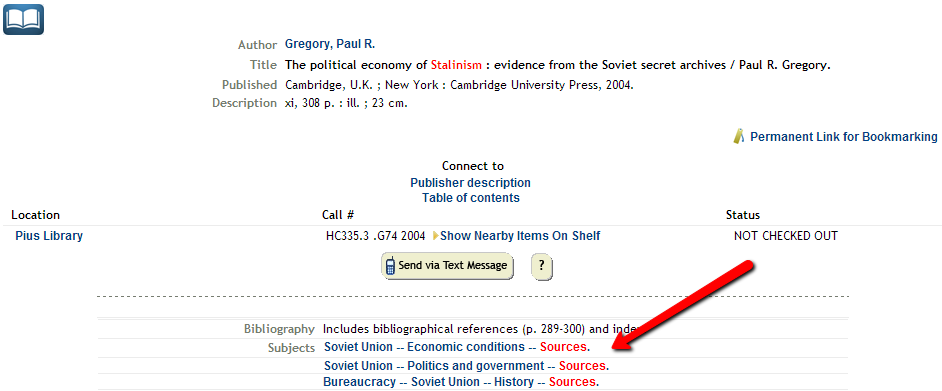Question: How can I find primary sources for my History of Eastern Europe research paper?
Answer:
1. As you research and read about your topic, make note of any texts mentioned that you could look for in the SLU Libraries Catalog and online. In the library catalog you would search for these texts with a title search.
2. Search for important figures from the period as authors (last name, first name) in the SLU Libraries Catalog.
Example author search:

If you don't find enough books written by your author/historical figure, check the MOBIUS library catalog. You can do the same author search in MOBIUS and see what items are available at over 60 academic libraries in Missouri. If you find something you're interested in you can request it for free through MOBIUS. It will be delivered to a SLU Library in 2-3 business days and you return it to a SLU Library when it's due.
Example keyword search:

Example Library of Congress subject headings and primary source indicators in the SLU Libraries Catalog.

4. Often times you can find primary sources freely available online. The Internet History Sourcebooks Project is a particularly great site. To find others, try searching Google for your topic along with the phrase "primary sources" or the word "texts".
5. Depending on the time period you're researching, primary source databases can be really helpful. Examples of these would be historical newspaper databases and electronic text collections. Just make sure to search primary source databases using terms that were actually used during that time period.
What are primary sources and secondary sources?
Primary sources are first-hand accounts of events or time periods in history. Secondary sources are based upon the examination of primary and/or other secondary sources.
